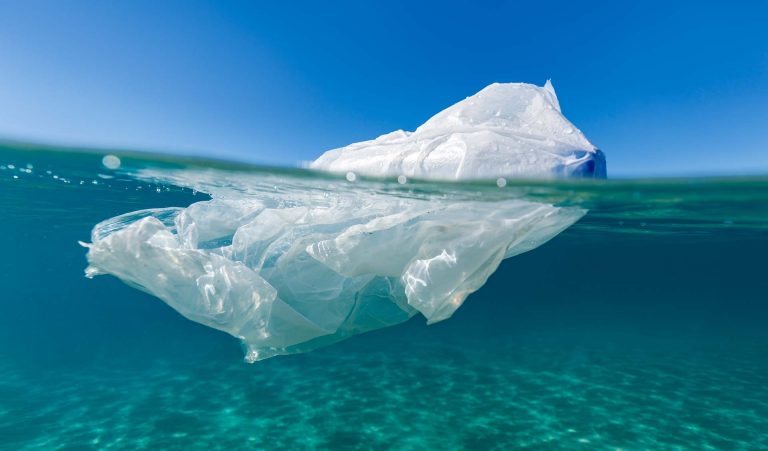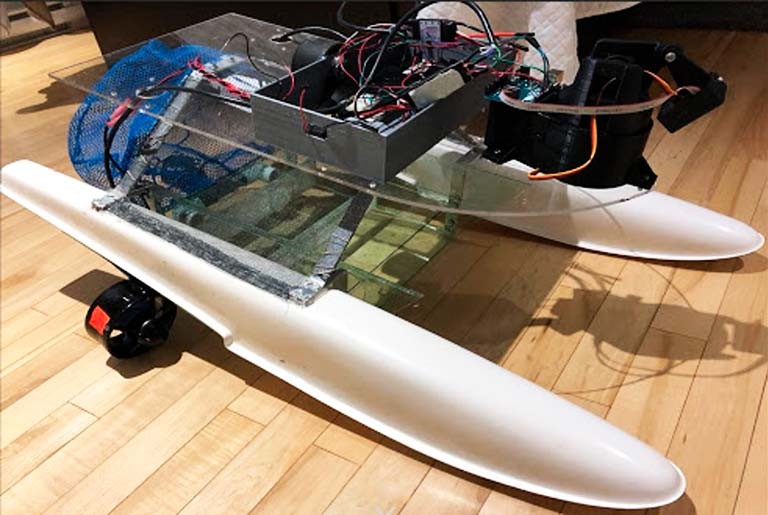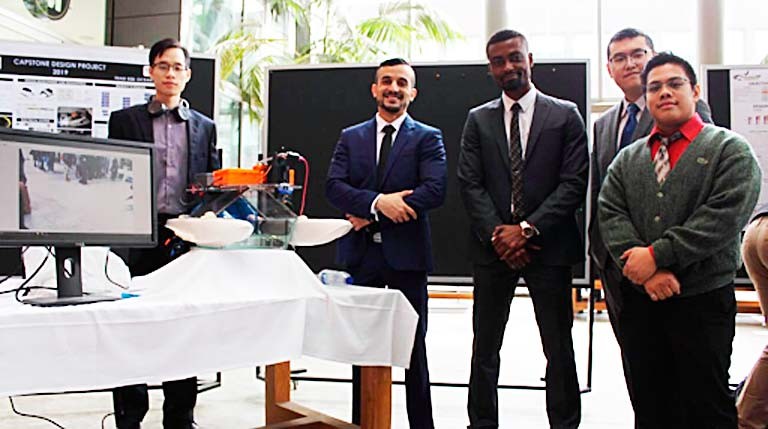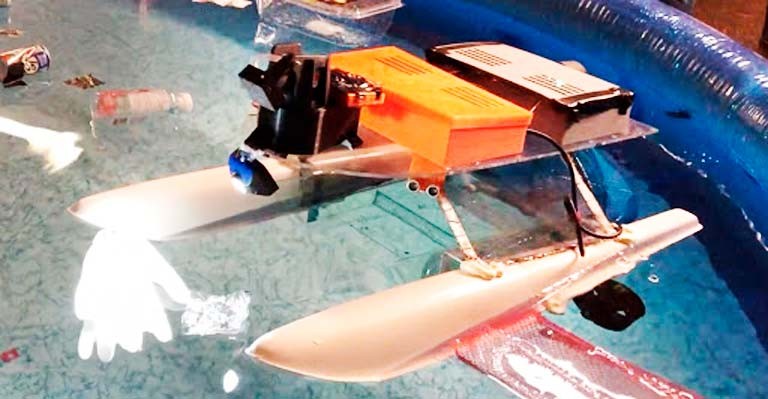5 Concordia engineering students build an ocean-cleaning aquatic drone prototype

During their final year, undergrads from the Gina Cody School of Engineering and Computer Science apply what they’ve learned in their degree to a practical problem through a Capstone project.
And, every spring, hundreds of fourth-year students convene in the Engineering, Computer Science and Visual Arts Integrated Complex (EV Building) to showcase the fruits of their labour to the Concordia community and members of the public.
While there was a general buzz throughout the EV atrium at this year’s event, one project garnered particular interest.
 “The most important feature of our prototype is the fact that we made the boat fully autonomous.”
“The most important feature of our prototype is the fact that we made the boat fully autonomous.”
Meet the Ocean Cleaners
Students Marouane Elouaraa, Lam Son Vo Ngoc, Zihao Guan, Nikko Badoles and Eric Kwarteng call themselves the Ocean Cleaners. For their Capstone project, they built an aquatic drone prototype capable of detecting and collecting plastic on the surface of the water.
“The most important feature of our prototype is the fact that we made the boat fully autonomous, requiring minimal maintenance,” says Elouaraa, who is in his last term of a mechanical engineering degree.
The prototype uses image processing technologies and machine learning to store plastic into an integrated collection bin. From there, it goes through a natural sorting process that separates bottles into the upper stage of the box and plastic bags and wrappers into the lower stage.

Elouaraa says the team worked through eight iterations before coming up with the final design of the prototype that they presented on April 5. His group was inspired by projects they’d read about that also sought to rectify the current condition of the world’s oceans.
“It’s essential for engineers to keep sustainability and the environment in mind. I believe every design should take into consideration the impact it might have on society and the environment,” Elouaraa says.
“After all, engineers contribute to shaping society. It’s only fair that we do it right.”
Practical applications and future possibilities
Since most plastic in the deep ocean funnels through river systems in populated areas, the ideal placement for the prototype would be at the exit of such rivers and lakes, explains Elouaraa.
That way, it could act as a filtering system that collects waste before it reaches the ocean. He also mentions the project has the potential to evolve — with the proper technology — into a marine discovery vessel.

“Our prototype was the only autonomous vessel using image processing so we garnered a lot of notice from visitors,” he says.
“We also noticed that many high school and college students were impressed by the idea of using science and engineering to help the environment.”
While the team is proud of their Capstone project, Elouaraa maintains it’s only a means to help salvage the current situation.
“Real change has to come from within society. People have to want to change their plastic consumption, push for more biodegradable materials and keep raising awareness about the damage we as a society have caused.”
Find out more about the Gina Cody School of Engineering and Computer Science.


